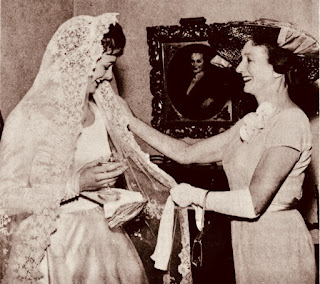In today's society, many people realize that etiquette does not imply white gloves, children curtsying, and women passing first through every door. But what does not change is the ever-present need for courtesy, respect, and mindfulness of the needs of others.
These are conscious choices individuals must make. Having systems of etiquette in place, in mind and habit, are incredibly helpful. Situations that put you in the company of others are sometimes challenged by technology, noise, or others’ improprieties.
This can be stressful. Especially when there is a lot of negativity “out there” whether displayed via attitude (disagreeable, pessimistic, harsh) or action (rude, uncooperative, unhelpful).
“The word etiquette literally means ‘ticket’ or ‘card,’ and refers to the ancient custom of a monarch setting forth ceremonial rules and regulations to be observed by members of the court. As far back as Anglo-Saxon times, consideration for others, as well as observance of a monarch’s rules, was part of etiquette, as demonstrated in the epic poem “Beowulf,” written around A.D. 700, when Queen Wealtheow, ‘mindful of etiquette,’ offered the goblet first to the kind, then to the courtiers, and finally to herself. And through the centuries the observance of such consideration has remained unquestioned.” –The Amy Vanderbilt Complete Book of Etiquette by Nancy Tuckerman, Nancy Dunnan
How Does Etiquette Alleviate Negativity?
How is etiquette your ticket out of negativity? Employing etiquette practices provides an orderliness to life, thus regularizing your own habits. Politeness is always positive. So is courtesy and respect.
Replacing negative habits - like the attitude and action examples above - with the positive habits of etiquette, and being consistently mindful to do so, is part of being etiquette-ful. Etiquette is the language of manners and, though both what is mannerly and what is etiquetteful can change, the principles behind both, do not.
Respect and courtesy are built upon the positive, the embracing of a positive world view, one in which change is realized as a constant and getting along with others is valued daily.
Situations in life are always changing. Asking yourself, “What’s the etiquetteful thing to do here?” is asking what is the most respectful and courteous thing to do.
It may mean that learning about etiquette rules for dining, for example, would be a very comforting thing to do. Comfort leads to confidence and knowledge leads to know-how. This naturally comes into play when you take the time to be mindful of the guidelines for a given social situation.
Mindful = Etiquette-ful
Being etiquetteful means that a person never thinks in extremes. It’s the opposite of what negativity can lead a person to. It is situation specific. It is exclusively in the present moment. It is asking what you should or should not do now. Etiquette is now-oriented. Thus, etiquette is not all-or-nothing. It is never all about you, which is what negative thinking is.
Etiquette is about helping others feel good in certain situations. When you help another feel good by not pointing out a flaw, or welcoming them by extending your hand in an etiquette-ful handshake, you will naturally feel better yourself. And you’ve put some positivity into someone else’s world.
Being respectful and being cheerful are habits that can be cultivated. Just like being: contented, patient, forgiving, compassionate, modest, thoughtful, charitable, honest, truthful, and determined. All are a part of what the “How to’s” of etiquette pertain to.
Social changes, such as the recognition of the equality of women, have led to changes in what’s proper and recognized as courteous behavior. When the first person who arrives at a door knows it’s proper to open and hold the door for the next person(s) it makes what could be a cumbersome situation feel easy and seamless.
Habits of complaining, of being overly dramatic, come from a source of negativity. Etiquette doesn’t allow for complaining, and being overly dramatic limits the time you can spend getting to know someone else by practicing good listening habits.
The bottom line is: when you are positive and etiquetteful, there is simply no room for negative thoughts, attitudes, or actions.
Which will you choose?
Meet our newest contributor, Candace Smith... A retired, national award-winning secondary school educator, Candace Smith teaches university students and professionals the soft skills of etiquette and protocol. She found these skills necessary in her own life after her husband received international recognition in 2002. Plunged into a new “normal” of travel and formal social gatherings with global leaders, she discovered how uncomfortable she was in many important social situations. After extensive training in etiquette and protocol, Candace realized a markedly increased confidence level in meeting and greeting and dining skills and was inspired to share these skills that will help others gain comfort and confidence in dining and networking situations. Learn more at http://www.candacesmithetiquette.com/
Etiquette Enthusiast, Maura J. Graber, is the Site Editor for the Etiquipedia© Etiquette Encyclopedia
















